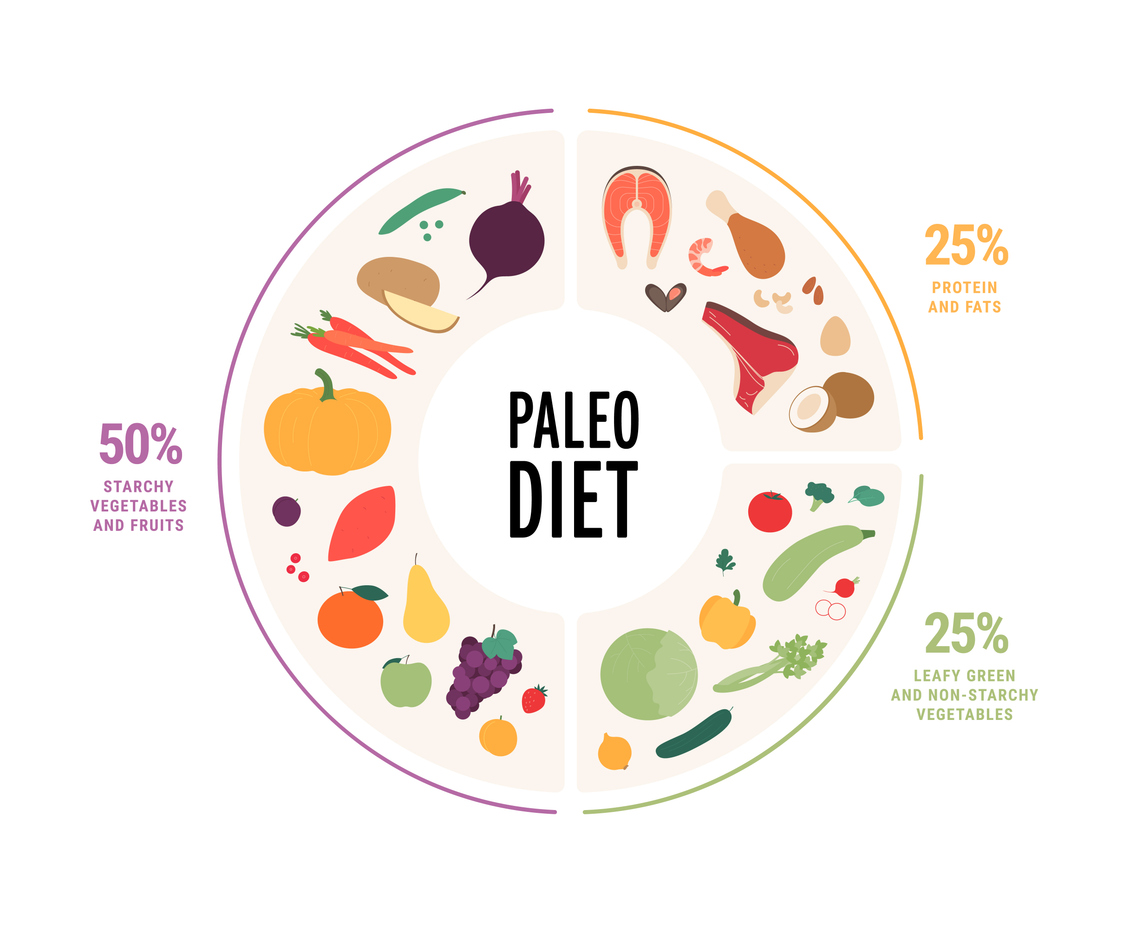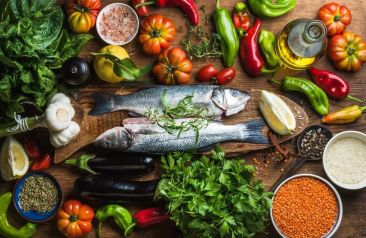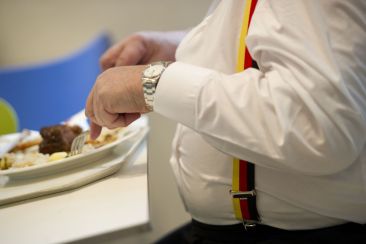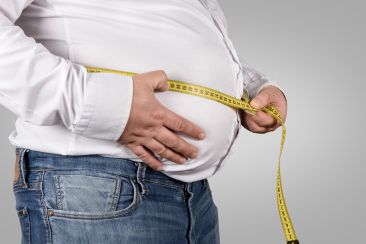
What is the Paleo Diet? Does it Work for Weight Loss?
What is the Paleo Diet? Does it Work for Weight Loss?
The Paleo Diet helps many people lose weight by eliminating processed foods and focusing on meat, vegetables, and fruit. It may also improve energy and digestion.
This diet emphasises consuming foods that people could hunt or forage in nature, including meat, fish, fruits, vegetables, nuts, and seeds. It also means avoiding modern foods like bread, pasta, candy, soda, and even milk and cheese.
The idea behind the Paleo Diet is straightforward: Our bodies are healthier when we eat in a manner similar to that of our ancient ancestors.
But here’s the big question: Can eating this way help you lose weight? And more importantly, is it something you can stick with?
In this blog, we’ll take a close look at:
- What the Paleo Diet is (and what it’s not)
- Why do some people say it helps with weight loss
- What science and studies have found
- How does it compare to other diets
- The good and bad sides of eating this way
If you’re trying to lose weight, feel better, or eat healthier, this guide will help you determine if the Paleo Diet is right for you or if it’s not the best fit.
Paleo Diet Basics: What It Is and How It Works
The Paleo Diet is a way of eating that attempts to replicate the diet of early humans thousands of years ago. This period in history is known as the Palaeolithic era, which is why it’s referred to as the “Paleo” Diet. People back then didn’t have farms, stores, or processed foods. They had to hunt animals and gather plants to survive.
The Paleo Diet is based on the idea that our bodies are healthiest when we eat the same kinds of foods that early humans did.
Allowed foods:
On the Paleo Diet, you can eat foods that are natural and not made in a factory. These include:
- Meat (like beef, chicken, and turkey)
- Fish and seafood
- Eggs
- Vegetables
- Fruits
- Nuts and seeds
- Healthy oils (like olive oil or coconut oil)
These are foods that come from nature and don’t need to be heavily processed.
Foods to avoid:
The Paleo Diet says to stay away from foods that didn’t exist back then, like:
- Grains (like bread, rice, pasta, and cereal)
- Legumes (like beans, peanuts, and lentils)
- Dairy (like milk, cheese, and yogurt)
- Junk food and snacks (like chips, cookies, and candy)
- Added sugar and fake ingredients
These foods were only created after farming and factories came along, so the diet says they don’t belong on your plate.
Modern variations:
Some people follow the Paleo Diet strictly, but others add a few healthy foods that aren’t exactly “Paleo,” such as:
- Butter from grass-fed cows
- Sweet potatoes
- Gluten-free snacks made with natural ingredients
The Paleo Diet isn’t one-size-fits-all. You can adjust it to work for you while still mainly eating healthy, natural foods.
Paleo Diet Science: Why It May Help You Lose Weight
The Paleo Diet isn’t just a food trend; it’s based on a theory about how our bodies work best. People who support this diet believe that our bodies haven’t changed much since the Stone Age. That means we may be healthier if we eat like our ancient ancestors did.
The big idea:
Thousands of years ago, people only ate foods they could hunt or find in nature. There were no farms, no junk food, and no fast food. Supporters of the Paleo Diet believe our bodies are still used to that old way of eating. They think modern foods, like bread, soda, and candy, can cause health problems like weight gain, diabetes, or heart disease.
Protein and whole foods:
The Paleo Diet is rich in protein from sources such as meat, eggs, and fish. It also includes lots of fruits and vegetables. These foods can:
- Help you feel full longer
- Give your body vitamins and nutrients
- Help you eat fewer calories without feeling hungry
As a result, some individuals lose weight simply by consuming these natural foods and eliminating processed ones.
What studies show:
Several scientific studies have examined the impact of the Paleo Diet on individuals' health. Here’s what they found:
- Individuals following the Paleo Diet often experience weight loss in the first few weeks.
- It may help lower blood pressure and blood sugar.
- Some people experience increased energy and reduced cravings for junk food.
But not all scientists agree. Some argue that we need more long-term research to determine definitively whether the Paleo Diet is the best choice for everyone.
Paleo Diet for Weight Loss: Real Results and Expectations
Many people try the Paleo Diet because they want to lose weight. Since this diet doesn’t allow junk food, added sugar, or processed snacks, many people start seeing results pretty quickly. But does it help you lose weight and maintain it?
Let’s find out.
What happens at first:
Many people who start the Paleo Diet lose weight in the first few weeks. That’s because:
- You stop eating high-calorie foods like chips, candy, and soda
- You eat healthier foods like veggies, fruits, and protein
- These foods help you feel full, so you eat less without feeling hungry
- Even though you’re not counting calories, you might eat fewer without trying.
How it compares to other diets:
- Some scientists studied how well the Paleo Diet works compared to other diets, like:
- Mediterranean Diet (lots of veggies, healthy fats, and some grains)
- Intermittent Fasting (eating during certain times of the day)
Here’s what they found over one year:
- People on the Paleo Diet lost about 4 pounds
- People on the Mediterranean Diet lost about 6 pounds
- People doing Intermittent Fasting lost about 8 pounds
So yes, Paleo can help you lose weight, but it doesn’t work better than all other diets.
The main idea:
The Paleo Diet can help you lose weight, especially in the initial stages. But it’s not a magic trick. Like any healthy eating plan, it only works if:
- You stick with it
- You don’t overeat
- You make it fit into your life
And remember: the best way to be healthy is to eat real food, move your body, and make wise choices every day.
Paleo Diet Health Benefits Beyond Weight Loss
The Paleo Diet isn’t just about losing weight. Many people say they feel better when they eat this way. It can also help with other aspects of your health, not just the number on the scale.
Helps your heart and blood:
Some studies show that the Paleo Diet can:
- Lower blood pressure (good for your heart)
- Lower blood sugar (helps prevent diabetes)
- Improve cholesterol (keeps your heart and blood vessels healthy)
This can help you stay healthy as you get older.
More energy and fewer cravings:
Many people say that when they eat Paleo:
- They have more energy
- They feel less hungry
- They don’t crave junk food as much
Eating real food gives your body better fuel.
Better digestion and less stomach pain:
When people stop eating dairy, bread, and processed foods, they often notice:
- Less bloating
- Less gas
- Better digestion
This means your stomach might feel better overall.
Clearer thinking and better mood:
Some people claim that they can think more clearly and feel less tired and grumpy on the Paleo Diet. Eating healthy food helps your brain function better.
Paleo Diet Risks and Criticisms: What to Know
The Paleo Diet has some benefits, but it also has some drawbacks. Some doctors and scientists think it’s not the best diet for everyone. Here are a few reasons why.
You might miss essential nutrients:
The Paleo Diet says no to:
- Milk and cheese (dairy)
- Bread and pasta (grains)
- Beans and lentils (legumes)
These foods give your body essential nutrients like:
- Calcium (for strong bones and teeth)
- Vitamin D (helps your body use calcium)
- Fibre (enables you to go to the bathroom)
If you stop eating these foods, you may need to supplement your diet with vitamins to maintain your health.
It can be hard to follow:
The Paleo Diet is stringent. That means:
- You can’t eat a lot of your favourite foods
- It’s tricky to eat out at restaurants
- It’s hard to stick with for a long time
Many people start the diet but give up because it’s too hard to follow every day.
Not suitable for the planet:
The Paleo Diet includes a lot of meat, and that can:
- It costs a lot of money
- Utilise a significant amount of land and water.
Some people worry that eating so much meat isn’t good for the Earth.
Paleo vs Other Diets: How It Compares
The Paleo Diet isn’t the only plan people follow to get healthy or lose weight. There are also other popular diets, such as the Mediterranean Diet and Intermittent Fasting.
Each diet has its own set of rules, and some work better for different individuals. Let’s compare them to see how they’re different.
A Quick Comparison:
|
Diet |
What You Eat |
Weight Loss |
Easy to Follow? |
Good for Long-Term? |
|
Paleo |
Meat, fish, fruits, veggies, nuts. No grains or dairy. |
Lose 4-5 lbs in a year |
Hard for many people |
It might be hard to keep up |
|
Mediterranean |
Fruits, veggies, fish, olive oil, whole grains |
Lose 6-7 lbs in a year |
Easier to follow |
Great for long-term health |
|
Intermittent Fasting |
Eat during certain hours; fast the rest |
Lose 7-8 kg in a year |
Medium difficulty |
Can work well long-term |
Paleo Diet FAQ: Beginner Questions Answered
What is the Paleo Diet, and how does it work for weight loss?
The Paleo Diet is a way of eating that mimics the diet of early humans. You eat real foods, such as meat, fruits, and vegetables, and skip things like bread and candy. It helps with weight loss by eliminating junk food and keeping you fuller for longer.
Can you lose belly fat on the Paleo Diet?
Yes, the Paleo Diet can help you lose belly fat. It eliminates sugary and processed foods that contribute to fat accumulation. Eating more protein and fibre helps your stomach feel full and look flatter over time.
What foods can you eat on the Paleo Diet for weight loss?
You can eat meat, fish, eggs, fruits, vegetables, nuts, and healthy oils. These foods are natural and help you feel full without consuming excessive calories, which aids in weight loss.
What foods should you avoid on the Paleo Diet?
On the Paleo Diet, you avoid foods like bread, pasta, rice, beans, milk, cheese, and anything processed. These foods didn’t exist in the time of early humans, so Paleo leaves them out.
Is the Paleo Diet safe for teenagers?
The Paleo Diet can be safe for teens if they consume a balanced diet of healthy foods, including fruits, vegetables, and protein. However, cutting out dairy and grains may not be suitable for everyone, so it’s advisable to consult a doctor first.
How fast can you lose weight on the Paleo Diet?
Some people start losing weight in the first few weeks, especially if they stop eating sugar and junk food. How fast you lose weight depends on your body, what you eat, and how active you are.
Final Thoughts: Is the Paleo Diet Right for You?
The Paleo Diet is a straightforward approach to eating that emphasises whole, natural foods, including meat, fruits, and vegetables. Many people lose weight and feel healthier when they cut out junk food, sugar, and processed snacks. While it may not be right for everyone, it can be a good choice if you enjoy cooking and eating whole foods. Like any diet, it works best when you stick with it and make healthy choices every day. Always consult a doctor or a nutrition expert before making significant changes to your diet. If you’re feeling stuck or unsure where to start, Weight Loss Coach can guide you every step of the way. They’ll help you stay on track, build healthy habits, and achieve your goals more quickly.


